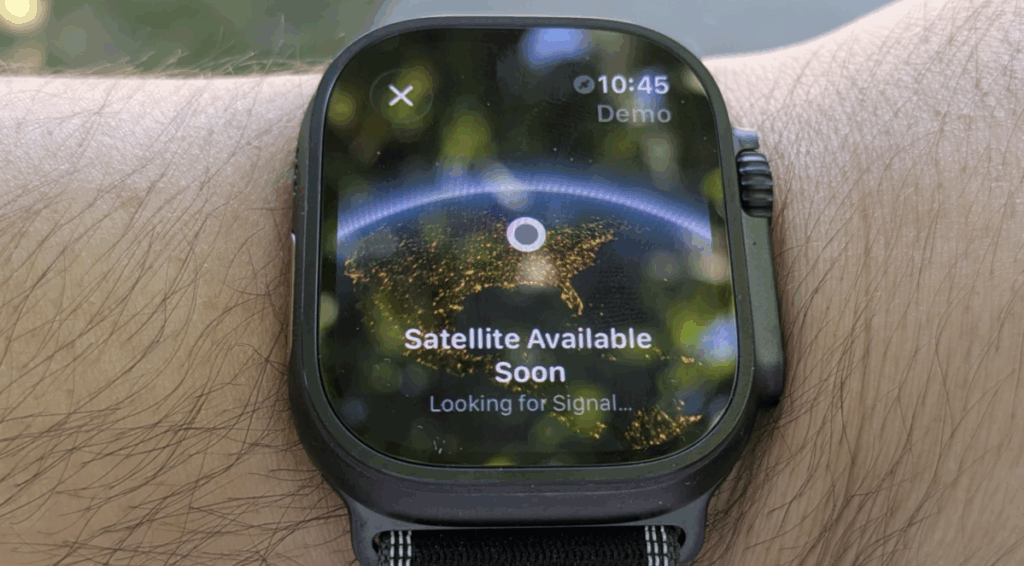
SpaceX’s cellular Starlink system, initially designed to provide connectivity to mobile phones, has now extended its reach to Apple Watches in Canada and Japan. This development marks a significant expansion in the capabilities of the Starlink network, offering new possibilities for wearable technology users.
In a recent quarterly earnings report, Japanese telecom operator KDDI announced that its Au wireless carrier now supports the Apple Watch. This means that SpaceX satellites can beam data to the latest Apple Watch models, including the Ultra 3, Series 11, and SE 3. The announcement was first noted by Ookla analyst Mike Dano.
New Capabilities for Apple Watch Users
Au has updated its support page to reflect the new compatibility between the Apple Watch and SpaceX’s cellular Starlink. However, this satellite support is exclusively available to Japanese customers who purchase the cellular version of the Apple Watch and subscribe to Au’s Starlink Direct service. According to the earnings presentation,
“Only text message sending and receiving via Apple Watch messages app is supported.”
Meanwhile, in Canada, SpaceX’s partner Rogers Communications has also introduced support for the Apple Watch. The Cellular Starlink service is currently available as a free beta to all Canadian users, further broadening the scope of satellite connectivity in North America.
Potential Expansion to the United States
This development suggests that SpaceX’s partner in the United States, T-Mobile, might soon offer similar capabilities. T-Mobile already supports ground-based cellular plans for the Apple Watch and did not immediately respond to requests for comment. However, T-Mobile’s T-Satellite service currently supports over 70 phone models, including the iPhone 13 and iPhone Air, indicating a robust foundation for future expansion.
The capability to connect Apple Watches to satellite networks could significantly benefit users, especially those traveling through areas with limited cellular coverage. When Apple introduced its new smartwatch models in September, only the Apple Watch Ultra 3 featured built-in satellite connectivity for emergency response, along with satellite-powered texting and location sharing, contingent on an active carrier plan.
Strategic Implications for SpaceX and Apple
The news arrives amid speculation about a potential acquisition of Apple’s satellite partner, Globalstar, by SpaceX. Such a move could integrate SpaceX’s cellular Starlink system more deeply into Apple products, enhancing their satellite communication capabilities. The technology not only facilitates satellite-powered texting but also supports data transmission to a growing number of Android and iOS apps, with the potential to enable video calls.
Industry analysts suggest that this expansion could position SpaceX as a pivotal player in the satellite communication market, especially as demand for reliable connectivity in remote areas continues to grow. The integration of satellite technology into everyday consumer devices like smartwatches represents a significant shift in how connectivity is perceived and utilized.
Looking Forward
As SpaceX continues to innovate and expand its satellite services, the implications for both the technology industry and consumers are profound. The potential acquisition of Globalstar and the ongoing partnerships with telecom operators around the world suggest a future where satellite connectivity becomes a standard feature in mobile and wearable devices.
For Apple Watch users, especially those in Canada and Japan, the ability to access satellite networks could transform their experience, offering a new level of connectivity and reliability. As the technology evolves, it will be interesting to see how other tech giants respond and whether similar collaborations emerge globally.
With the rapid advancements in satellite technology and the increasing integration with consumer electronics, the landscape of connectivity is poised for significant change. As SpaceX and its partners continue to push the boundaries, the future of satellite communication looks promising, with the potential to revolutionize how we stay connected in an ever-mobile world.






